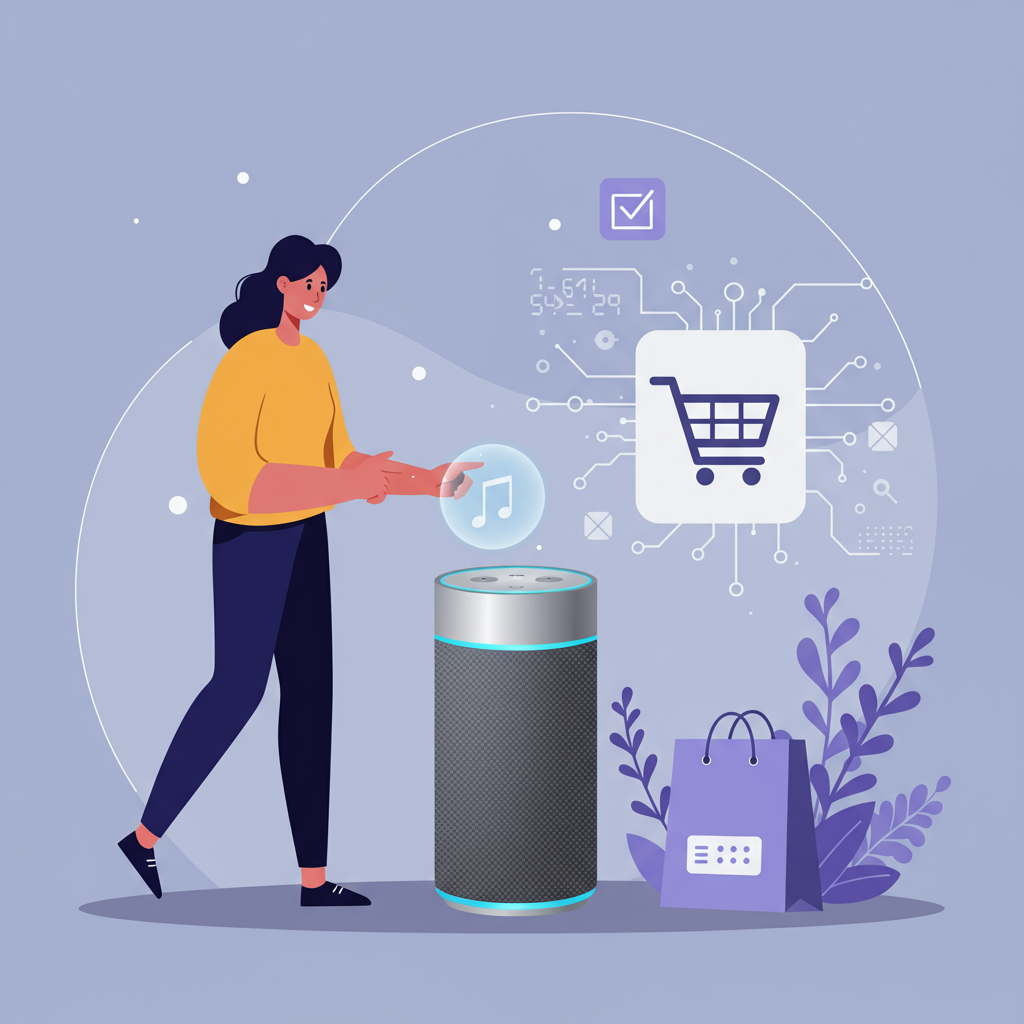Discover how integrating voice AI can transform the shopping experience on your Shopify store, making it as intuitive as a conversation.
I’ve been watching the evolution of e-commerce closely, and I believe we’re on the cusp of another major revolution: voice commerce.
Imagine your customers effortlessly browsing, asking questions, and even completing purchases on your Shopify store, all just by using their voice.
This isn’t science fiction anymore; it’s rapidly becoming a reality, and as Shopify merchants, we have a unique opportunity to be at the forefront of this shift.
In this article, I want to share my insights on how integrating AI-powered voice capabilities can transform your online business, making shopping more intuitive and accessible than ever before.
So, what exactly is voice commerce? At its core, it’s the ability to buy and sell products or services using voice commands through devices like smart speakers, smartphones, or even smart displays.
Think about interacting with Amazon Alexa, Google Assistant, or Apple’s Siri, but instead of just asking for the weather, you’re asking about product specifications, checking inventory, or placing an order.
It goes beyond simple commands; it involves sophisticated AI understanding natural language, processing complex queries, and guiding the user through a personalized shopping journey.
The timing for this shift is perfect. We’ve seen an explosion in the adoption of voice-enabled devices in homes and on the go.
Coupled with significant advancements in Artificial Intelligence, particularly in Natural Language Processing (NLP), these systems are now incredibly accurate at understanding human speech, even with accents or varied phrasing.
Consumers are also becoming increasingly comfortable with voice interfaces for daily tasks, making the leap to voice shopping a natural progression.
For us, as Shopify merchants, the benefits of embracing voice commerce are compelling. Firstly, it dramatically enhances the customer experience by offering unparalleled convenience.
Customers can shop hands-free, while multitasking, or even from another room, removing physical barriers and making the process incredibly fluid.
Secondly, it significantly increases accessibility. For individuals with visual impairments, motor disabilities, or those who simply prefer not to type, voice offers a powerful alternative.
This opens up your store to a wider demographic and demonstrates a commitment to inclusive design.
I also see a huge potential for personalization. AI can learn from past voice interactions, recommend products based on spoken preferences, and even anticipate needs, leading to highly tailored shopping experiences.
This level of personalized engagement can foster stronger customer loyalty and drive repeat purchases.
Furthermore, integrating voice capabilities can give your Shopify store a significant competitive advantage. While many are still contemplating, early adopters will capture market share and establish themselves as innovators.
It’s about being where your customers are, and increasingly, they are interacting with technology through voice.
Now, you might be wondering, ‘How do I actually integrate voice AI with my Shopify store?’ The good news is that Shopify’s robust API infrastructure makes this more achievable than you might think.
While a full custom voice assistant might be a large undertaking, there are increasingly sophisticated third-party apps and platforms designed to bridge this gap.
These solutions often leverage existing voice assistant frameworks (like Google Assistant or Alexa Skills) and connect them directly to your Shopify product catalog and checkout process.
The key components involve a powerful NLP engine to interpret customer requests, a seamless integration with your Shopify product database to retrieve information, and a secure way to process orders and payments.
Imagine a customer saying, ‘Hey Google, ask [Your Store Name] if you have a blue t-shirt in size large.’ The AI processes this, checks your Shopify inventory, and responds, ‘Yes, we do! Would you like to add it to your cart?’
This conversational flow can guide customers from discovery all the way through to a completed purchase, all without touching a screen.
Of course, like any emerging technology, there are challenges to consider. Privacy is paramount; ensuring customer data is handled securely and transparently is non-negotiable.
Technical complexity can also be a hurdle, requiring expertise in AI, API integration, and user experience design for voice interfaces.
User adoption will also be a gradual process. While many are comfortable with voice for simple queries, complex transactions might take time for widespread acceptance.
Maintaining your brand’s unique voice and tone through an AI interface is another nuanced challenge that requires careful scripting and training of the AI.
Despite these hurdles, I firmly believe that voice commerce is not just a fleeting trend but a fundamental shift in how people will interact with online stores.
My advice to fellow Shopify merchants is to start exploring this space now. Even small steps, like integrating voice search capabilities, can provide valuable insights and prepare you for the future.
I’m incredibly excited about the potential this holds for making shopping truly effortless and intuitive.
What do you think about the future of voice commerce for Shopify stores? I’d love to hear your perspective.
The future of retail is conversational, and by embracing AI and voice, we can ensure our Shopify stores are ready for it.






